Understanding Anxiety
Learn About Anxiety
While experiencing fear, apprehension, or worry when facing a dangerous or stressful situation is often healthy, there are times when people experience these feelings to a degree that is out of proportion to the actual stressor. In fact, these feeling may even prevent them from functioning in their everyday lives. In these situations, a person may be diagnosed with an anxiety disorder. According to the Fifth Edition of the Diagnostic and Statistical Manual of Mental Disorders, there are a number of diagnoses used to describe when a person’s anxiety prevents him or her from functioning well in his or her life. Some of these disorders include:
Specific phobia: People with specific phobias experience intense anxiety reactions that are triggered by specific stimuli. Common phobias include a fear of spiders, flying, being in enclosed spaces, animals, blood, or heights.
Social anxiety disorder: People with social anxiety disorder experience intense fear of being negatively evaluated by others in a social setting. This fear can often lead them to avoid many social situations, even if the consequences for avoiding these situations may be severe.
Panic disorder: Panic disorder sufferers experience intense episodes of anxiety known as panic attacks. During a panic attack, a person’s heart rate accelerates and he or she can experience sweating, shortness of breath, shaking, feeling as though he or she is choking, dizziness, numbness, derealization, depersonalization, and chest pain. During a panic attack, people often fear they are dying.
Generalized anxiety disorder (GAD): People with GAD experience heightened anxiety that is not necessarily tied to a specific situation or single stressor. They may feel restless, fatigued, and irritable and can have difficulty concentrating and difficulty sleeping. The degree of worry is such that it interferes with a person’s ability to function well in daily life.
Struggling with an anxiety disorder can be extremely difficult, and sometimes people attempt to use substances to manage the symptoms of anxiety that they experience. Unfortunately, substance use often creates problems of its own, and the person may then find him or herself fighting a two-front battle against both anxiety and substance use.
It may feel nearly impossible to gain victory in such a struggle, but help is available. With expert and compassionate treatment, it is possible to retake one’s life from the grasp of substance use and co-occurring anxiety.
Statistics
Anxiety Statistics
Anxiety disorders are some of the most common disorders among adults. According to the National Institute of Mental Health (NIMH), 18% of Americans will struggle with an anxiety disorder in a given year, and nearly one quarter of these adults, or roughly 4% of Americans overall, will be diagnosed as having a severe anxiety disorder. Over the course of their entire lives, nearly 30% of people will be diagnosed with anxiety disorders. Anxiety disorders also affect each gender differently, with women experiencing them 60% more frequently than men do. Unfortunately, only 42% of people with anxiety disorders will receive treatment in any given year.
Causes and Risk Factors
Causes and Risk Factors for Anxiety
A significant body of research has indicated that anxiety disorders are caused by a complex interaction of genetic and environmental factors. These may include:
Genetic: Research has shown that mental health disorders tend to run in families. That is, if a person’s parent or sibling has a mental health disorder, that person is also more likely to develop a mental health disorder at some point in life.
Environmental: In addition to genetic vulnerabilities, one’s environment can influence whether or not a person develops an anxiety disorder. Being exposed to severe chronic stress, traumatic events, violence, low socioeconomic status, and having poor social support can all increase the chance that a person will be diagnosed with an anxiety disorder. In addition, having poor coping resources can make an anxiety disorder more likely in a person’s life.
Risk Factors:
- Lacking quality social support
- Family history of mental illness or substance abuse
- Personal history of other mental illness or substance abuse
- Living in poverty
- Experiencing long-term chronic stress
- Having certain personality characteristics
- Enduring traumatic experiences, such as physical, emotional, or sexual abuse
- Being female
- Growing up in an unstable home environment
Signs and Symptoms
Signs and Symptoms of Anxiety
The signs and symptoms of an anxiety disorder depend on a number of factors, such as one’s personality and which anxiety disorder a person is suffering from. However, the following are some signs and symptoms that can be present when someone is struggling with an anxiety disorder:
Behavioral symptoms:
- Restlessness
- Going out of one’s way to avoid certain people, places, or experiences
- Having angry or aggressive outbursts
- Being startled easily
- Poor performance at work
- Engaging in certain rituals to minimize anxiety
- Not completing work or tasks on-time
- Failing to keep up with responsibilities at home, work, or school
Physical symptoms:
- Excessive sweating
- Problems with sleeping
- Changes in appetite
- Shortness of breath
- Dizziness
- Nausea
- Muscle tension
- Headaches
- Rapid heart rate
- Changes in body temperature
Cognitive symptoms:
- Racing thoughts
- Loss of concentration
- Nightmares
- Obsessive thoughts
- Difficulties with decision-making
- Cyclical thoughts
Psychosocial symptoms:
- Feelings of shame or guilt
- Rapid changes in mood
- Chronic worry
- Strong feelings of apprehension
- Feelings of powerlessness
- Emotional detachment from events and relationships
Effects
Effects of Anxiety
Anxiety disorders tend to be highly treatable, but if a person continues to suffer from an anxiety disorder and co-occurring substance abuse and does not seek treatment, he or she may experience some of the following negative consequences:
- Poor work performance
- Loss of job
- Financial difficulties
- Relational stress
- Loss of relationships
- Developing a substance use disorder
- Social withdrawal
- Suffering from other mental health conditions
- Worsening of anxiety disorder symptoms
- Thoughts of suicide
- Suicide attempts
Co-Occurring Disorders
Anxiety and Co-Occurring Disorders
Unfortunately many people suffer from other disorders in addition to their anxiety disorder and co-occurring substance use disorders. Some common co-occurring disorders may include:
- Depressive disorders
- Posttraumatic stress disorder (PTSD)
- Substance use disorders
- Personality disorders
- Bipolar disorder
- Body dysmorphic disorder
- Attention-deficit/hyperactivity disorder (ADHD)
- Schizophrenia
- Obsessive-compulsive disorder (OCD)
- Other anxiety disorders






